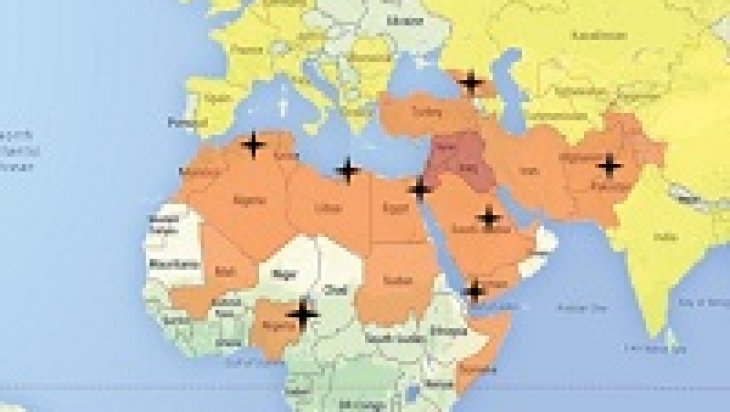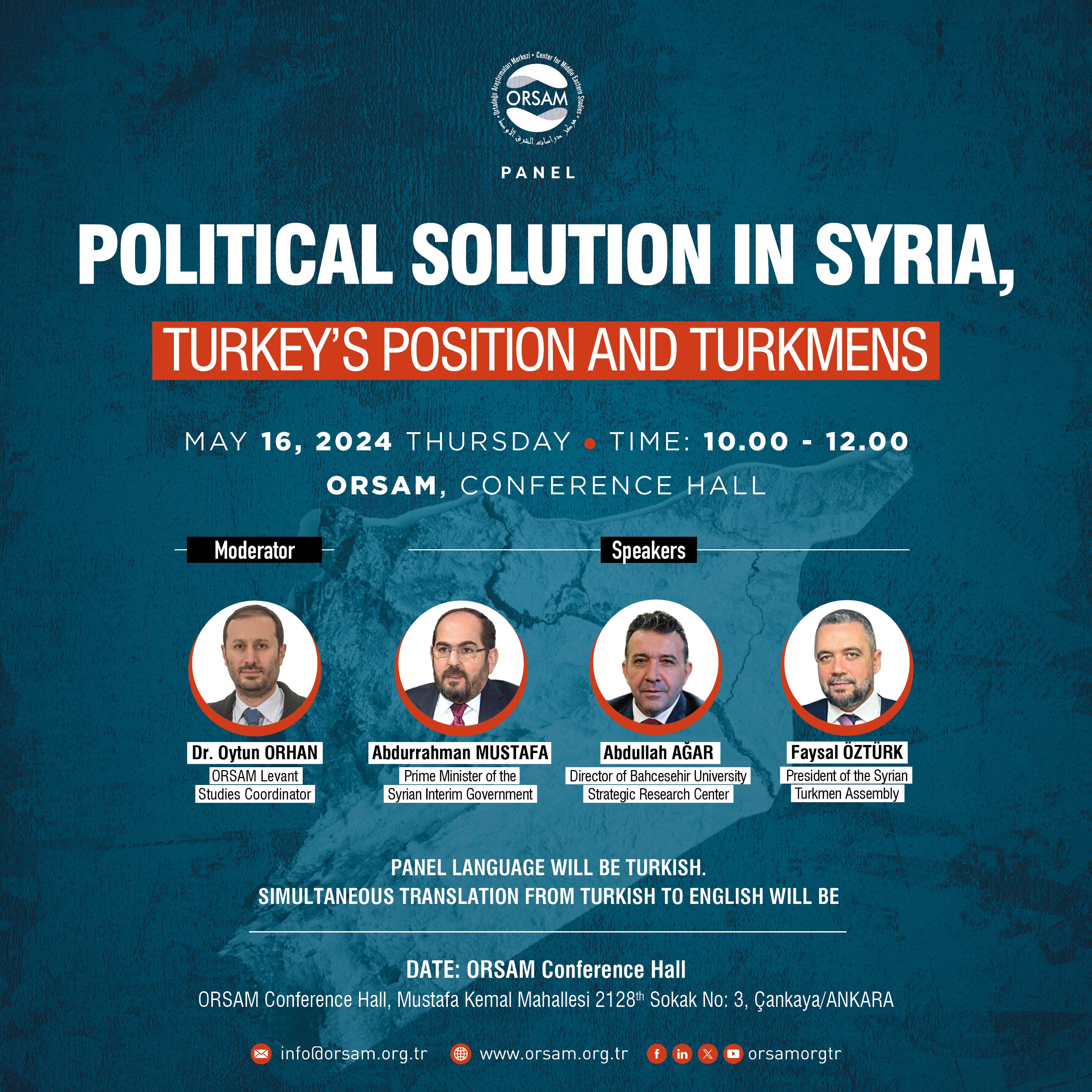ISIS: Geopolitical Management Of Terrorism

ISIS can be defined as a proto-state-like terrorist organization which has mutated on a local, regional, and global scale since its establishment. When compared to other terrorist organizations, ISIS has some distinctive characteristics although it also has discriminatory features that exist in a typical terrorist organization. The conditions where ISIS emerged after the invasion of Iraq, and its warfare strategy and its political rhetoric that were shaped after ISIS’s involvement in Syrian Civil War, have made ISIS a primary security risk not only for the Middle Eastern countries but also for the international community on global scale. More importantly, its proto-state structure which is a product of a systematical strategy, its declaration of caliphate, and its expansionist and aggressive policy that aims to control a specific land differentiates ISIS from other terrorist organizations, and make it difficult to cope with the security risks that ISIS have created. Despite the ambiguity in war, attack, and terror strategies that ISIS adopts, when it is evaluated with the targets it has chosen in recent years, and with its flexible, changing tactics aimed at these targets, ISIS acts with war and violence doctrines which are simultaneous, gradual and integrated with each other from local scale to regional and global scale.
Although ISIS was established as a local organization in Iraq, it has been able to control a wide geography thanks to the complicated process of Arab revolutions and geopolitical disorder and regional instability due to the Syrian Civil War, as well as its utilization of the opportunity for expansion with ensuring the obedience of many large and small, violence prone terrorist organizations. It is not only the message of 'caliphate' that leads to the geographical expansion of ISIS, but also the vulnerable state structures in North Africa and prominently in Iraq and Syria. These vulnerable state structures also make it possible for ISIS to play the role of a 'surrogate mother' in these countries. ISIS’s strategic vision and its methods for geopolitical management of terror which works as an inseparable part of its strategic vision can form a framework to understand this expansion.
Strategic and Geopolitical Vision
The most important feature of ISIS is having a geopolitical discourse based on violence, and an operational power that enables ISIS to engage in this discourse. The metanarrative, which has been theorized in reference to religion, and built as a total war, constitutes the inseparable part of ISIS’s strategic vision in terms of particularly generating and managing violence. The conception of expansion that targets a large geographical area, on the other hand, constitutes the main strategy of the organization. ISIS, which tries to accomplish this strategy and its accompanying violence and attack practices at tactical level with declaration of war, has a disorganized military doctrine. This three-level strategic vision has influenced survival strategy of the organization and the whole content of its terrorist activities.
The thing that has shaped the ISIS’s political vision is mostly its messianic discourse that centers on religious narrative. ISIS’s strategic vision and war strategy can be understood by examining its redefining the understanding of state and sovereignty, rereading international politics by integrating it with a larger scale religious discourse, and its enemy perception towards regional order. Especially the ‘declaration of caliphate’ and its political construction have formed theological basis for the link between operationalization of ISIS’s strategic vision and its physical expansion. Caliphate is useful for the aversion of hierarchy of sovereignty which has been built around the political unit of nation state in the Middle East as well as forcing the borders of the nation state to a radical change. Such a theo-political narrative lies behind ISIS’s attack to the political order of Sykes-Picot, and its challenge to the current political sovereignty understanding which has been formed around secular nation-state unit. Challenging the west-centered secular order with the promise of a new religious universality on the axis of caliphate and so-called jihad, ISIS is in search of changing the rules of game in the field of geopolitical war in line with a hybrid war doctrine.
What makes ISIS’s strategic vision operational on a larger scale is its unique geopolitical vision. This vision also constitutes ISIS’s strategic goals in the short, medium, and long term if it survives. In this sense, ISIS has a total war and terror strategy that consists of three geographical rings: 'interior ring' consisting of Iraq and Syria, 'near abroad ring' consisting of larger Middle East and North Africa, and 'far abroad ring' consisting of Europe, America and Asia. While the interior ring consisting of Iraq and Syria has priority for ISIS in terms of ISIS’s defense and attacking strategy, it also constitutes the center of ISIS geopolitically. Although disintegration of Iraq and war against the Assad regime are among the main strategic goals of the interior ring, the importance of the interior ring for ISIS lies behind maintaining the organizational structure, and violence practices by deepening ethno-sectarian fraction at the ideological level, and spreading the disintegration over a large geographical area within near abroad ring. Therefore, as a line of defense that is difficult to seize, inner circle is the center of organization’s geopolitical defense zone. Terrorist activities in the far abroad ring aiming at chaos, which contributes to the survival of near abroad ring, are quite significant for drawing new fighters to the center. Terrorist activities, at the same time, make metanarrative based on extreme violence easier to activate ISIS propaganda. Organizational/institutional and sociological survival of the organization depends on keeping the control of its lands in Iraq and Syria which constitute the center of the interior ring.
The second geographical ring which ISIS calls 'near abroad' consists of the rest of the Middle East and North Africa. The main goal of the organization in this ring is defusing the pressure on the central ring, encouraging the flow of foreign fighters to the center, and lastly strengthening the geopolitical expansion zone through the provinces that will join the 'Islamic State'. Using the effect of the overflow of political, military and humanitarian crises caused by the Syrian Civil War to the nearby geography as an opportunity, ISIS tries to expand borders of the 'Islamic State' by increasing area control with the extremist groups who are present in this geographical ring. The goal of doing this is both to deepen fault lines in the vulnerable countries in that ring by applying a new concentration of power on those countries, and to take the opportunity to form a basis for propaganda at the ideological level. Besides, the actions of ISIS in the immediate area and its land acquisitions via other local organizations provide ISIS to gain flexibility for the defense of center geography. In this way, a violence and clash environment, which is favorable for the organization’s expansion goal in the middle and long term, has emerged. In 2014 and 2015, ISIS achieved to link extremist groups in Egypt, Libya, Saudi Arabia, Kirghizstan, Yemen, Nigeria, Afghanistan-Pakistan, and Uzbekistan to itself. Such an expansion prevents military strategy towards the organization to gain a holistic characteristic, as well as it makes ISIS’s defeat difficult.
The third geographical ring that ISIS calls far abroad ring is the area out of the Islamic world. Here, there is a discursive and operational strategy which has been formed around the definition of ‘global enemy’, and puts all the countries out of the Islamic State into target. Especially, when we look at the attacks that aimed continental Europe in recent years, it can be understood that ISIS tries to put the motivation of attack, which is similar to that in the immediate environment, into effect also in the far abroad ring via terrorist attacks. The main goal of ISIS, which attacks particularly continental European countries where Muslim population lives densely, makes Muslims in those countries migrate to Caliphate lands, with the prediction that reactions towards Muslims will increase after the attacks.
Although there are significant differences among characteristics of the three geographical rings which are the targets of ISIS’s attack campaign, it can be said that the attacks are planned to support each other strategically regarding ISIS’s targets. This strategy can be formulized as 'defend and expand in the interior ring', 'establish emirates and create disorder' in the near abroad ring, and 'attack and polarize' in the far abroad ring.
Hybrid Military Strategy
The third dimension that has shaped ISIS’s strategic vision is its military strategy. Compared to other terrorist organizations, ISIS’s military strategy has a hybrid structure as it controls a specific area, it has a capacity to establish internal order with declaration of caliphate and institutional structure similar to a state, and it has an organized military structure similar to an army which it can be mobilized as and when needed. Hybrid warfare can be defined as a kind of warfare that combines conventional warfare with irregular warfare. The main characteristics of hybrid warfare are: a mixed military structure which consists of regular armies and semi-autonomous cells; a pragmatic strategy which is flexible and adapts quickly; sensational terrorist activities which have a high tendency to use extreme violence; a communication strategy which puts cyber warfare methods and propaganda network that uses social media actively and aggressively into effect; an illicit crime network which uses all the illegal ways to find financial resources; and lastly, an anarchic interpretation of international law which ignores the main principles of law of war. When considering as a whole, hybrid warfare can be seen as a kind of clash that consists of terrorism, guerilla warfare and conventional warfare, and that directs all of these simultaneously to a specific target with using all of them together if it is possible, and lastly that merges quickly with the environment (fusion feature) around the geographical area where crisis happens.
It is possible to say that ISIS is able to use all the characteristics of hybrid warfare mentioned above. While all these warfare methods are used in the interior geographical ring, some elements of hybrid warfare (particularly terrorist attacks) are used in the countries of near abroad ring, and in the far abroad ring terrorist attacks are used predominantly. When considering as a whole, if ISIS will survive in the Middle or if it will transform into a real state depends on whether the center of its gravity will be dismantled or not.
* This article was published in Ortadoğu Analiz journal with the title of "ISIS: Geopolitical Management of Terrorism”







